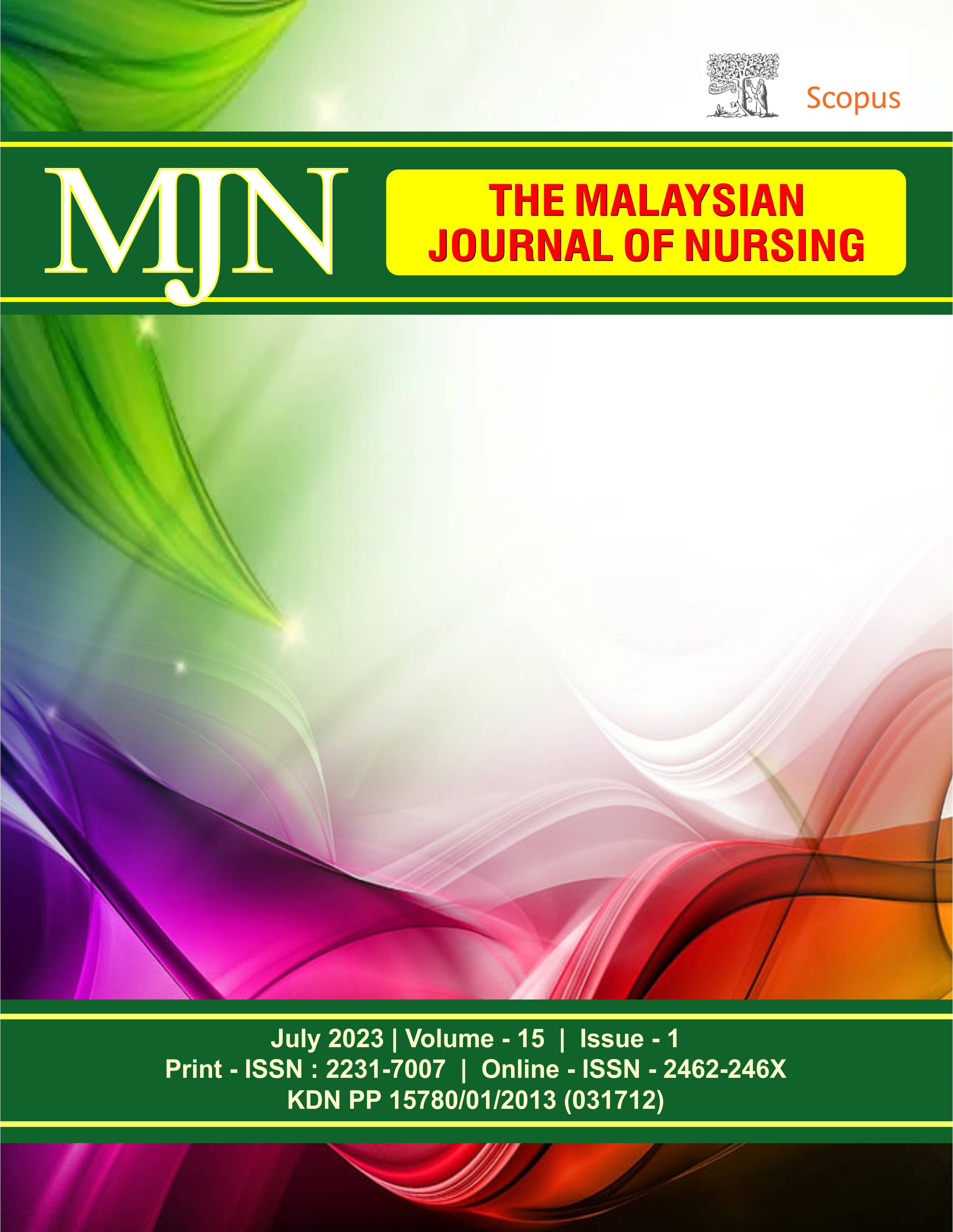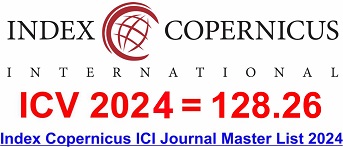Impact of Dance Therapy on Comfort Based on Kolcaba's Nursing Theory in Children with Cerebral Palsy
DOI:
https://doi.org/10.31674/mjn.2023.v15i01.020Abstract
Background: Musculoskeletal disorders and balance difficulties are part of several multidimensional problems in children with cerebral palsy. The obligation to undergo physiotherapy has an emotional and painful impact, so there is a risk of affecting mental health. Objective: The study aims to collect evidence of the impact of dance therapy on providing comfort based on the taxonomic structure of Kolcaba's nursing theory. Methods: A literature review was done by exploring the Frontiers Database, Springer Link, Pub Med, and Research Gate published between 2017 and October 2022. The data were analyzed using deductive content analysis regarding the effect of the dancing intervention on the comfort of children with cerebral palsy after undergoing medical therapy. Results: Only seven articles were included for data extraction on dance therapy providing comfort. School-age children and adolescents dominate this study. In addition, researchers found that dance therapy also has a physiological, social, and psychological impact on children with cerebral palsy. Conclusion: Dance therapy is an alternative to provide comfort for children with cerebral palsy through transcendence, relief, and ease. In addition, this therapy is an inexpensive artistic innovation because it uses good music, timing, and minimal movement to stimulate children to participate.
Keywords:
Cerebral Palsy, Dance Therapy, Kolcaba's Comfort TheoryDownloads
References
Adolfsson, M., Johnson, E., & Nilsson, S. (2019). How Pain Management for Children with Cerebral Palsy in South African Schools Complies with Up-To-Date Knowledge. African Journal of Disability, 8(1), 1-13. https://doi.org/10.4102/ajod.v8i0.575
Alligood, M. R. (2017). Nursing Theorists and Their Work-E-Book. Elsevier Health Sciences. https://evolve.elsevier.com/cs/product/9780323402217?role=student, Accessed on 9th November, 2022.
Binti Awang, S., Dioso, R. I., & Said, F. M. (2022). Knowledge and Attitude of Staff Nurses Towards the Implementation of Play Therapy on Children. The Malaysian Journal of Nursing, 14(2), 51-54. https://doi.org/10.31674/mjn.2022.v14i02.009
Chandra, M., & Raman, K. (2016). Application of Katharine Kolcaba Comfort Theory in Post Operative Child: Delivering Integrative Comfort Care Intervention by Using the Theory of Comfort-A Aase Study of a 5-Year-Old Child Admitted in Picu with Laparotomy Experiencing Post Operative Discomfort. International Journal of Science and Research (IJSR), 5(6), 1714-20. https://doi.org/10.21275/v5i6.nov164670
Cherriere, C., Robert, M., Fung, K., Tremblay Racine, F., Tallet, J., & Lemay, M. (2020). Is there evidence of benefits associated with dancing in children and adults with cerebral palsy? A scoping review. Disability and Rehabilitation, 42(23), 3395-3402. https://doi.org/10.1080/09638288.2019.1590866
Jadhav, S. V., & Kanase, S. B. (2019). Impact of Physiotherapy Treatment in Children with Cerebral Palsy Aged Between 6 Months To 5 Years. Indian Journal of Public Health, 10(12), 189-191. https://doi.org/10.37506/v10/i12/2019/ijphrd/191936
Joung, H. J., Park, J., Ahn, J., Park, M. S., & Lee, Y. (2020). Effects of Creative Dance-Based Exercise on Gait Performance in Adolescents with Cerebral Palsy. Journal of Exercise Rehabilitation, 16(4), 332. https://doi.org/10.12965/jer.2040384.192
KEMENKES RI. (2018). Medical Records and Health Information (Vol. 148). https://www.kemkes.go.id/downloads/resources/download/pusdatin/profil-kesehatan-indonesia/profil-kesehatan-indonesia-2018.pdf, Accessed on 28th October 2022.
Kisvetrová, H., Vévodová, Š., & Školoudík, D. (2018). Comfort‐Supporting Nursing Activities for End‐of‐Life Patients in an Institutionalized Environment. Journal of Nursing Scholarship, 50(2), 126-133. https://doi.org/10.1111/jnu.12341
Kolcaba, K. Y. (1994). A theory of holistic comfort for nursing. Journal of Advanced Nursing, 19(6), 1178-1184. https://doi.org/10.1111/j.1365-2648.1994.tb01202.x
Lai, B., Vogtle, L., Young, R., Craig, M., Kim, Y., Gowey, M., ... & Rimmer, J. H. (2022). Telehealth Movement-to-Music to Increase Physical activity Participation among Adolescents with Cerebral Palsy: Pilot Randomized Controlled Trial. JMIR Formative Research, 6(10), e36049. https://doi.org/10.2196/36049
Lakes, K. D., Sharp, K., Grant-Beuttler, M., Neville, R., Haddad, F., Sunico, R., ... & Radom-Aizik, S. (2019). A Six-week Therapeutic Ballet Intervention Improved Gait and Inhibitory Control in Children with Cerebral Palsy—A Pilot Study. Frontiers in Public Health, 7, 137. https://doi.org/10.3389/fpubh.2019.00137
Lin, Y., Zhou, Y., & Chen, C. (2023). Interventions and practices using Comfort Theory of Kolcaba to promote adults’ comfort: an evidence and gap map protocol of international effectiveness studies. Systematic Reviews, 12(1), 1-10. https://doi.org/10.1186/s13643-023-02202-8
López‐Ortiz, C., Gaebler‐Spira, D. J., Mckeeman, S. N., Mcnish, R. N., & Green, D. (2019). Dance and rehabilitation in cerebral palsy: a systematic search and review. Developmental Medicine & Child Neurology, 61(4), 393-398. https://doi.org/10.1111/dmcn.14064
Oliveira, S. M. D., Costa, K. N. D. F. M., Santos, K. F. O. D., Oliveira, J. D. S., Pereira, M. A., & Fernandes, M. D. G. M. (2020). Comfort Needs as Perceived by Hospitalized Elders: An Analysis Under the Light of Kolcaba’s Theory. Revista Brasileira de Enfermagem, 73, e20190501. https://doi.org/10.1590/0034-7167-2019-0501
Panteliadis, C. P., & Vassilyadi, P. (2018). Cerebral Palsy: A Historical Review. Cerebral Palsy: A Multidisciplinary Approach, 1-12. https://doi.org/10.1007/978-3-319-67858-0_1
Patel, D. R., Neelakantan, M., Pandher, K., & Merrick, J. (2020). Cerebral Palsy in Children: A Clinical Overview. Translational Pediatrics, 9(Suppl 1), S125. https://doi.org/10.21037/tp.2020.01.01
Petigas, L., & Newman, C. J. (2021). Paediatricians’ Views on Pain in Children with Profound Intellectual and Multiple Disabilities. Brain Sciences, 11(3), 408. https://doi.org/10.3390/brainsci11030408
Pujasari, R. E., Rusmil, K., & Somasetia, D. H. (2020). Relationship Between Degrees of Gross Motor Function and Nutritional Status in Children with Spastic Type of Cerebral Palsy. Sari Pediatri, 21(6), 364. https://doi.org/10.14238/sp21.6.2020.364-70
Roth, Jeannine; Severtsen, Billie; Hoeksel, Renee; Eddy, Linda. (2022, May/June). The Experience of Physical Activity in Adolescents with Cerebral Palsy. Orthopaedic Nursing 41(3): 203-210. https://doi.org/10.1097/NOR.0000000000000850
Sarancha, I., Leniv, Z., Androshchuk, L., Bykova, O., Podhorinova, A., Tereshko, I., ... & Matsuk, L. (2021). Dance Therapy in The Socialization of Individuals with Musculoskeletal Disorders. Revista Romaneasca Pentru Educatie Multidimensionala, 13(3), 211-224. https://doi.org/10.18662/rrem/13.3/448
Schuiling, K. D. (2003). Exploring The Presence of Comfort Within the Context of Childbirth. University of Michigan. https://doi.org/10.1007/978-0-230-34563-8_9
Simpamba, M. M. (2020). Malnutrition and Disability: Evaluating Factors influencing Severe Malnutrition in Children with Cerebral Palsy in Lusaka, Zambia. Indonesian Journal of Disability Studies, 7(1), 81-91. https://doi.org/10.21776/ub.ijds.2019.007.01.9
Stribling, K., & Christy, J. (2017). Creative Dance Practice Improves Postural Control in a Child with Cerebral Palsy. Pediatric Physical Therapy, 29(4), 365-369. https://doi.org/10.1097/PEP.0000000000000450
Sulistyawati, E., Aprilia, Z., & Bangun, M. (2023, April). Application of Katherine Kolcaba’s Comfort Theory in Overcoming Fatigue in Children with Cancer Undergoing Chemotherapy. In 1st Lawang Sewu International Symposium 2022 on Health Sciences (LSISHS 2022) (pp. 278-288). Atlantis Press. https://doi.org/10.2991/978-94-6463-132-6_32
Takahashi, H., Seki, M., Matsumura, T., An, M., Sasai, T., Ogawa, Y., ... & Kato, T. (2020). The Effectiveness of Dance/Movement Therapy in Children with Williams Syndrome: A Pilot Study. American Journal of Dance Therapy, 42, 33-60. https://doi.org/10.1007/s10465-020-09324-9
Talukdar, J. R., Mahmud, I., & Rashid, S. F. (2018). Primary health care seeking behaviour of people with physical disabilities in Bangladesh: a cross-sectional study. Archives of Public Health, 76, 1-9. https://doi.org/10.1186/s13690-018-0293-1
Teixeira-Machado, L., & DeSantana, J. M. (2019). Effect Of Dance on Lower-Limb Range of Motion in Young People with Cerebral Palsy: A Blinded Randomized Controlled Clinical Trial. Adolescent Health, Medicine and Therapeutics, 21-28. https://doi.org/10.2147/ahmt.s177867
Teixeira-Machado, L., Azevedo-Santos, I., & DeSantana, J. M. (2017). Dance Improves Functionality and Psychosocial Adjustment in Cerebral Palsy: A Randomized Controlled Clinical Trial. American Journal of Physical Medicine & Rehabilitation, 96(6), 424-429. https://doi.org/10.1097/PHM.0000000000000646
Wirastri, U., Nurhaeni, N., & Syahreni, E. (2017). Aplikasi Teori Comfort Kolcaba Dalam Asuhan Keperawatan Pada Anak Dengan Demam Di Ruang Infeksi Anak RSUPN Dr. Cipto Mangunkusumo. Jurnal Kesehatan, 6(1), 27-32. https://jurnalkesehatanstikesnw.ac.id/index.php/stikesnw/article/view/10/7, Accessed on 3rd November 2022
Withers, J. W., Muzzolon, S. B., & Zonta, M. B. (2019). Influence of Adapted Hip-Hop Dancing on Quality of Life and Social Participation among Children/Adolescents with Cerebral Palsy. Arquivos De Neuro-Psiquiatria, 77, 712-722. https://doi.org/10.1590/0004-282X20190124
Yeni, R. I. (2017). Application Of Kathrine Kolcaba’s Comfort Theory on Children Fulfillment of Oxygenation Need in Treatment Rooms. Jurnal Keperawatan, 8(1). https://doi.org/10.22219/jk.v8i1.4019
Published
How to Cite
Issue
Section
License
Copyright (c) 2023 The Malaysian Journal of Nursing (MJN)

This work is licensed under a Creative Commons Attribution-NonCommercial-NoDerivatives 4.0 International License.



































